It was yet another hot and sunny day at Semakau, and I was also here just yesterday, bringing a group of students from Zhenghua Secondary for a guided walk. Today, however, was different. I would be doing seagrass monitoring work instead of doing a guided walk!
Ok, I was still arrowed to give an intro to the landfill at the jetty, but that's definitely different from doing a full guided walk :)
My buddy for the day was Helen, who was also a Semakau guide and a Wildfilm crew. We got the furthest seagrass site - Site 1. Walking to the site itself already took us quite a while, and thus I didn't really have much time to explore the intertidal area after we finish the monitoring work.
Been considering if I should post something on this trip, since I didn't really take many photos with the limited time for exploration, but finally decided to do it since this was my very first monitoring trip, and I must simply put it down some where :)
Yah, I've followed Siti and company on their monitoring trips before. But usually, I was tasked to do other things, such as helping with the filming, or guiding Dr Dan's group, so this was in fact the first time I'm doing the actual monitoring work.
Shufen was late (and thus so were the equipment), and she had to take another boat from West Coast Pier to get to Semakau. This was probably also partly why I got arrowed to do the long intro to Semakau Landfill while waiting for them. I enjoyed giving the intro though. It's always nice to share with others what you know about a place you like so much.
When we reached the intertidal area, we started with Len from Seagrass-Watch HQ (Australia) and Siti giving us a quick refresher on the types of seagrass while waiting for the equipment to arrive.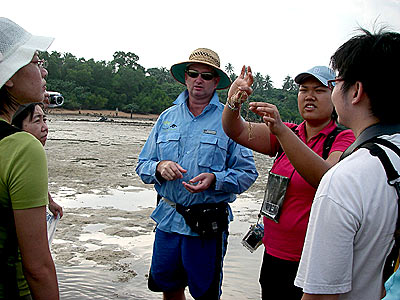
Len also gave a demo on how to do the monitoring properly. Helen and I then followed Shufen to walk all the way to the Wild Wild west of the seagrass lagoon to get to our monitoring site (it's located at the western end of the lagoon).
The photo below shows our transect tape in the fore ground, and the other two transect lines and the respective seagrassers in the background. Each monitoring site had 3 transect lines.
It so happened that there was a fairly big hard coral at the end of my transect line, which means in future if I do this line again, it will be quite easy for me to lay the transect tape since I know the ending point.
And below were the seagrassers at the other 2 monitoring sites.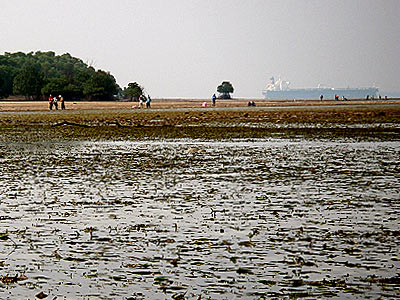
The whole process was quite interesting actually. The entire transect line was 50 metres, and we had to lay the transect square every 5 metres to note down the sediments, any special things found in the transect square, the seagrass percentage cover, the species percentage cover, the algae percentage cover, epiphytes percentage cover, and took a photo of the transect square at 5m, 25m and 45m. Here's one of the photo I took at 45m.
On the bottom left corner in the transect square, can you see a sand collar? This is the egg capsule of a moon snail (Family Naticidae). Since the sand collar is intact, it means the eggs are still alive. When they hatch, the collar disintegrates.
We found 4 species of seagrass along our transect line - Enhalus Acoroides, Halophila ovalis, Cymodocea serrulata and Halodule uninervis. Heh heh, hopefully my memory didn't fail me and these were indeed the species we have recorded.
The substrate was mostly sandy with a bit of mud and some broken shells here and there.
During the monitoring session, Helen and I had a bit problem figuring out the percentage cover for the seagrass and algae at some places, because we had assumed that since they occurred together, they should not add up to more than 100%. However, we were later enlightened by Len, who told us that it was even possible to have both 100% seagrass cover and 100% algae cover! This is because they may occur on different depth. For example, the seagrass may cover the entire sand surface, but the algae may be floating all around the place.
In any case, we finally managed to finish the monitoring, but tide was already rising and we only had very little time to explore the shores. We still had a few good finds though.
We found 2 upside-down jellyfish (Cassiopia sp.).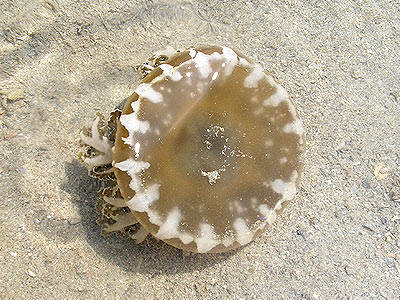
The photo below shows the jellyfish in the process of turning itself back to the upside-down position after we had turned it over for a quick photo shoot. In the end, we had to get it into shallow water so that it couldn't turn over so that we can get a few good shots. This jellyfish has symbiotic algae called zooxanthallae, mostly in its tentacles, which provides which photosynthesises better with it being upside-down. The jellyfish obtains energy from the food provided by the algae.
We also found this rock-boring giant clam (Tridacna crocea).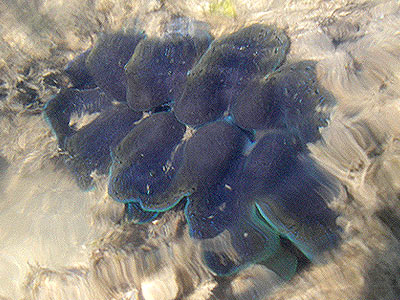
Like the upside-down jellyfish, giant clams also harbour zooxanthallae in its fleshy body, and have extensive digestive systems to extract the nutrients produced by the zooxanthellae.
And here's one of the anemone where we found a false clownfish (Amphiprion ocellaris). The anemone is probably a magnificent anemone (Heteractis magnifica) .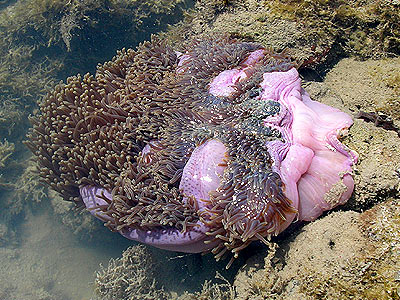
Kok Sheng was with me when we went nemo-seeking. I found two false clownfishes, one in the anemone above, and the other in a Merten's carpet anemone (Stichodactyla mertensii). However, on both counts, the nemo appeared when Kok Sheng was looking at the wrong place! By the time he tried to look for the nemo, it had gone back hiding in the anemone. Helen spotted the one at the magnificent anemone as well. I think Kok Sheng was quite suay that day that he missed both. Hahahahhaa....
But anyway, at least he finished his stuff earlier and had more time to explore the area, and thus he saw more things. Check out his blog for the details.
You can find out more about our seagrass trips at the Team Seagrass blog too!
Sunday, March 25, 2007
My First Seagrass Monitoring Trip
Saturday, March 24, 2007
A Sunny Semakau Walk on 24 March 2007
We had a group of Science students from Zhenghua Secondary today. Initially, I was supposed to get 10 participants, but some how a few didn't turn up, and so I was left with only 7 of them in my group - Octopus. Jingkai was my assistant for the day. Managed to convinced him to become a guide after meeting him in one of the Team Seagrass monitoring sessions at Chek Jawa.
Hopefully I didn't scare him away after the first walk :)
It was a really hot and sunny day. And so I was glad that the students were very well-behaved, and didn't run around like wild monkeys at some of my previous walks. Or perhaps it's because they had to camp overnight in their school and most of them were too tired to ran around since they hardly got any sleep?
In any case, it was yet another wonderful trip.
We didn't spend much time at the mangrove area since we had to rush out to the reef area to catch the lowest tide, making only a few stops at the more important highlights, such as the common sea stars (Archaster typicus) area.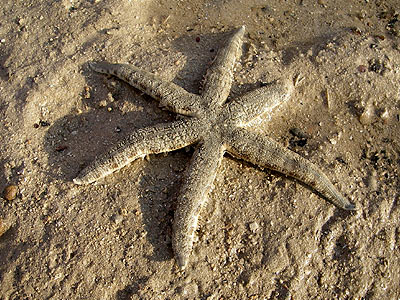
Luan Keng managed to find us a sea star with 6 arms. Perhaps it was really too hot, we didn't managed to find any more sea stars ourselves. Usually, we can find lots of them. You may notice that the one above has one of its arms shorter than the rest. Sea stars are really amazing animals, and they are able to regenerate lost limbs. However, it sometimes takes up to a year for the lost limbs to grow back, and in fact, if the central disc is damaged, it may just die.
And here a group shot taken with the sea star.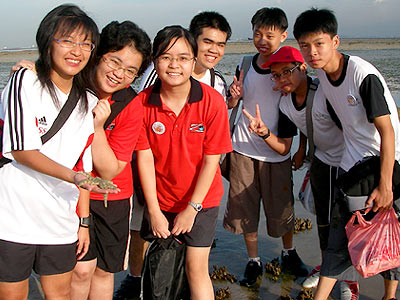
We also had to cross a seagrass lagoon. Seagrasses are flowering plants, and they are very important in the marine eco-system, because they are often used as nurseries by the marine animals. A seagrass lagoon has lots of shelter and food, and thus it's an excellent place to grow up! Currently, we have a group of volunteers called Team Seagrass to help monitor the seagrass in our waters. Read more about them at the Team Seagrass blog!
As we cross the seagrass lagoon, I was looking high and low for the resident synaptid sea cucumber which we normally see in the lagoon. However, I think I must be really tired that day, and couldn't find it. Thus, I decided to make another attempt to find it on the way back.
And as we stepped out of the seagrass lagoon, our hunter seeker had already found us two other species of sea cucumbers.
The above is a sandfish sea cucumber (Holothuria scabra). This sea cucumber is edible, but they must be properly treated before consumption, as they are poisonous.
The below is a thorny sea cucumber which we are not sure of the exact species.
As we walked into the coral rubble area, we found many hairy crabs (Family Pilumnidae).
Hairy crabs look so much like the places they live that it can quite difficult to spot them sometimes.
At the coral rubble, we also saw a scallop (Family Pectinidae).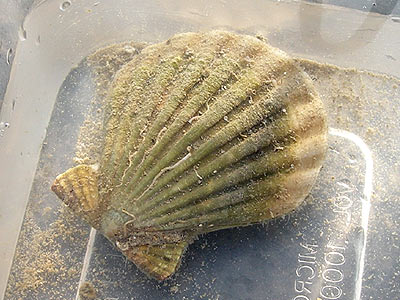
Like most other clams, scallops are filter feeders, meaning that when the tide is high, they open their shells a little and a current of water is generated through their shell. They will sieve out the food particles with their gills. When they are exposed during low tide, they will close up their shells.
We also found several different nudibranchs today. The name nudibranchs actually means "naked gills". They are actually slugs.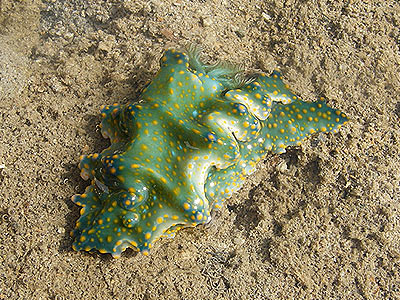
The above is the ceratosoma nudibranch (Ceratosoma sinuata). They appear to be in season these days, and we have been seeing them for the past few trips.
From top-left in clockwise direction, we have the polka dot nudibranch (Jorunna funebris), a marginated glossodoris nudibranch (Glossodoris atromarginata), a bohol nudibranch (Discodoris boholensis) and a pustolose phyllid nudibranch (Phyllidiella pustulosa).
While they move slowly and look soft, nudibranchs are not as defenseless as they look. Many of them can secrete chemicals that make them very distasteful or even toxic, while others harbour stinging cells from the animals they feed on.
Nudibranchs are hermaphrodites, and thus each slug has both male and female reproductive organs. They often fertilise each other when they mate. Sometimes, one may take on a male role, the other a female role.
Other than nudibranchs, we also found another slug - the onch (Onchidium sp.).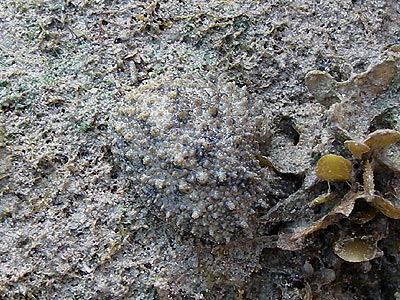
These slugs often blend in very well with the rocks, and graze on algae on the rocks during low tide. They have gills on their backsides to breathe air.
Towards the coral reef, we also found two knobbly sea stars (Protoreaster nodosus). Here's one of them.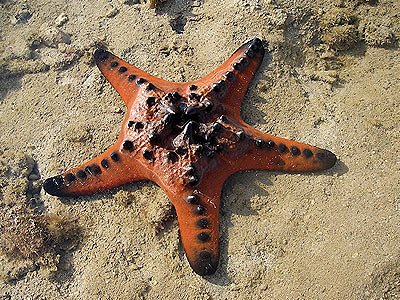
And those of you who have read my earlier blogs will know I always get my visitors to take a group photo with the knobbly sea star :)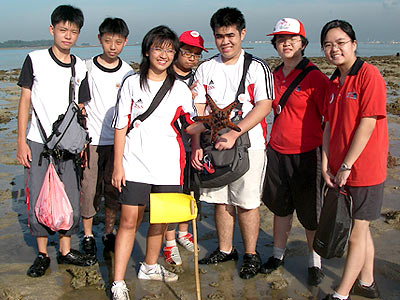
Like other sea stars, knobbly sea stars use seawater instead of blood to pump up their bodies, transfer nutrients to other parts of their body, and move their tube feet. Thus, it is stressful for sea stars to be left out of water for too long. This is why we always take a quick photo and release them into the water immediately.
At the coral reef, we also saw many different corals, including the hard corals (Order Scleractinia) below.
We saw many soft corals too, but I forgot to take any pictures. The reef area was also where we usually found the stonefish sea cucumber (Actinopyga lecanora).
Like most other sea cucumbers, the stonefish sea cucumber also breathes using its anus! To breathe, it pumps water in through its backside and up through an internal breathing system of branching tubes called respiratory trees. The water is then flushed out through the backside again. Related to the sea stars, they also get very stressful when they are out of sea water for too long.
We also saw a noble volute (Cymbiola nobilis).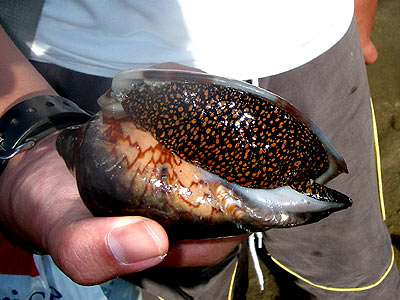
These huge snail normally feed on clams and other shells. It will seek out buried clams with its siphons and enclose the prey in its huge foot. It will wait until the exhausted clams open up to breathe, which can take several days! The volute will then sticks its proboscis in and eat the flesh of its prey with its radula (something like a tongue).
We also found this cute frogfish (Family Antennariidae). A frogfish has limb-like pectoral fins with an elbow-like joint, which allows it to sneak around slowly without its prey noticing it.
It also has a lure growing on top of its head, which sometimes it wriggles about to lure its prey, which are usually other fishes. Can you see the lure in the picture below?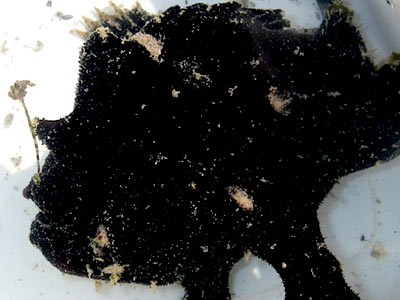
On the way back passing through the coral rubble area, I decided to help Luan Keng to pick up the hunter-seeker flags. And to my surprise, I realised that they found an upside-down jellyfish (Cassiopea sp.) and placed it at one of the flags after I had walked passed it earlier.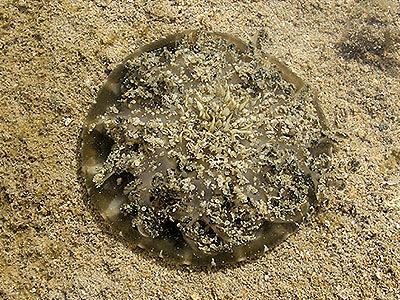
The above shows the jellyfish in its upside-down position. This jellyfish has symbiotic algae, mostly in its tentacles, which photosynthesises better with it being upside-down. Some of the food made by the algae will leak and get absorbed by the jellyfish.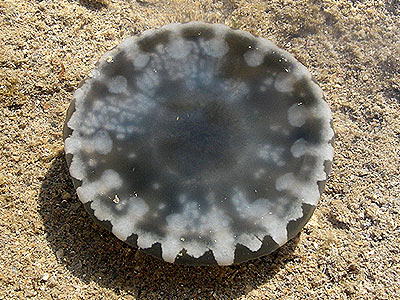
On the way back passing through the seagrass lagoon, Samson told me he saw the synaptid sea cucumber (Family Synaptidae) earlier. I tried looking for it, but missed it again. Good thing Samson remembered the spot he found it, and we finally get to see it.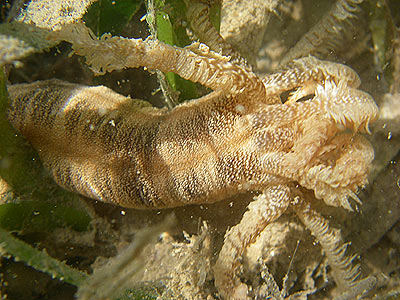
The above is a close-up of the sea cucumber's feeding tentacles lashing about to collect edible particles. When fully stretch, this sea cucumber may actually be about two metres long or even more!
We then headed towards the mangrove area, which I gave a quick introduction to the mangrove trees and the fiddler crabs, before heading back on NEA's bus to the main office for a video presentation about the landfill.
On the whole, although it's a really hot day, we still managed to see many interesting things. Thanks to the Zhenghua students for being so co-operative! :)
See also:
- More pictures on Samson's blog.
Friday, March 23, 2007
Operation Thunder Crab
It was still dark when we received the dawn mission.
Two of our own forces, Leather Jacket and Thunder Lord, were taken by the mysterious Bubuman. Nobody knew the Bubuman's true identity. We only knew that he was a master of traps. The bubu traps he designed looks flimsy, but once you get in, it is almost impossible to escape without external help.
The rescue mission was assigned to AL (Weapon: Iron Poker), and me, the Tide Chaser (Weapon: Metallic Chops). The Urban Forest (Weapon: Flash Box) also decided to join us for some on-the-job training.
With help from one of the best transporter in the region, the Bumboater, we managed to sneak onto the Frog Island safe and sound.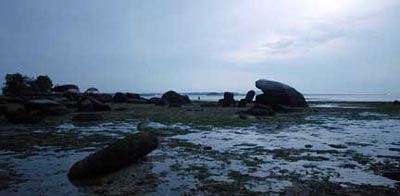
The Bubuman was not on the island. One day, we might eventually have a confrontation, but today was not the day.
We found the trap easily. A cage made from iron, it looked simple, but was in fact a highly sophisticated trap.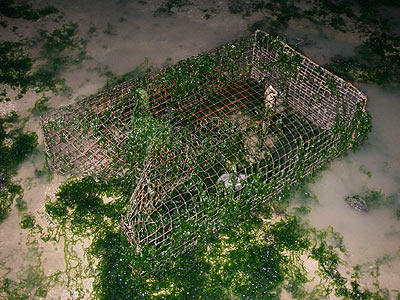
It seemed that we had arrived too late. We had lost Leather Jacket.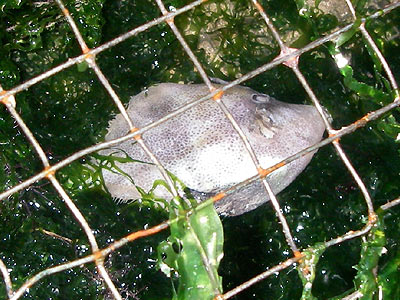
However, we had no time for mourning. We saw that while Thunder Lord looked somewhat traumatised, he was still alive. Urban Forest and I quickly tried to deactivate the trap.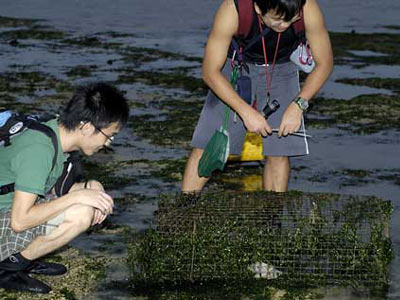
We managed to do it and the door of the trap opened. But alas! Thunder Lord was so traumatised that he had lost his mind, and refused to come out! AL and I decided to use our secret weapons to save him - his Iron Poker, and my Metallic Chops.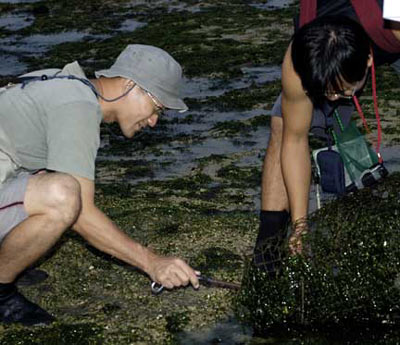
We poked and we pushed. But Thunder Lord, who had lost his mind, attacked us using his weapon - the Thunder Claws! There were rumours that once his Thunder Claws grab hold of something, they would only let go on hearing a clap of thunder. But of course, we knew that was bullshit. My Metallic Chops had fought several friendly matches with the Thunder Claws.
However, the Thunder Claws were still very powerful, and AL's Iron Poker was destroyed in the process of saving Thunder Lord. Eventually, we managed to get him out of the trap, but Thunder Lord still wanted to attack us.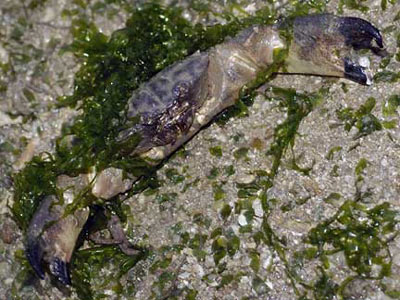
At this moment, Urban Forest felt that it's time to use his secret weapon, the Flash Box, which can emit a lightning flash to dazzle his opponents. But today was certainly not his day! His Flash Box took a splash, and lost its flash!
We finally decided to just get away from Thunder Lord and leave him alone for a while. He should regain his mind eventually.
As we got away, three old friends joined us.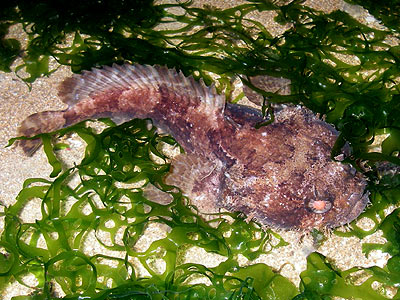
Toady (Weapon: Big Jaws)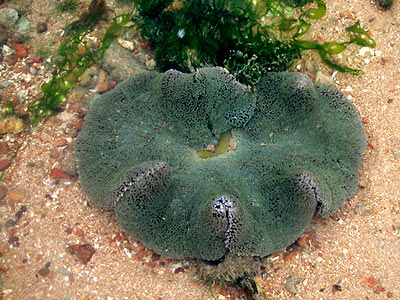
Carpet Anybody (Weapon: Sticky Blanket)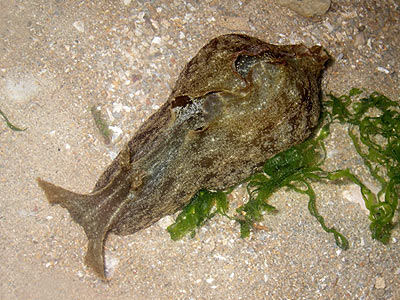
Purple Painter (Weapon: Ink Screen)
Was there a new mission for the team?
Stay tuned, to the Adventures of the Tide Chaser.
Note:
- For a more scientifically and politically correct verion, check out the Urban Forest blog.
- Thanks Ria for photos 1,4, 5 & 6 :)
Thursday, March 22, 2007
Cyrene Reef
Located in our southern waters, Cyrene Reef is like a little marine life paradise!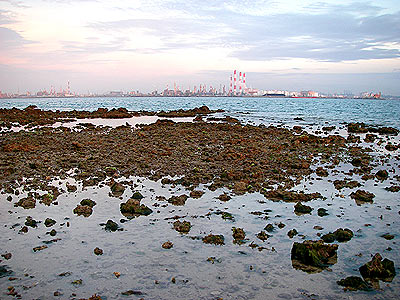
You can see the reef above with Jurong Island in the background.
This was my first trip to the little patch reef. I had assumed that it would be somewhat like Jong, but to my surprise, it turned out to be even better!
Cyrene Reef was much, much richer, and had lots of beautiful seagrass. Find out more about the seagrasses at Cyrene Reef at the Team Seagrass Blog.
Apart from the lovely seagrasses, here are some of the wildlife I saw at Cyrene Reef.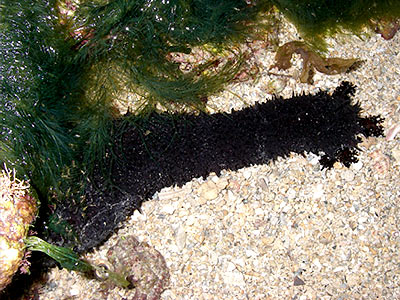
A black sea cucumber (Holothuria leucospilota). We often saw them on our shores actually. Understand that some of the others also found another species of sea cucumber - the stonefish sea cucumber (Actinopyga lecanora).
There were many swimming crabs on Cyrene Reef, and here's one of them, a flower crab (Portunus pelagicus).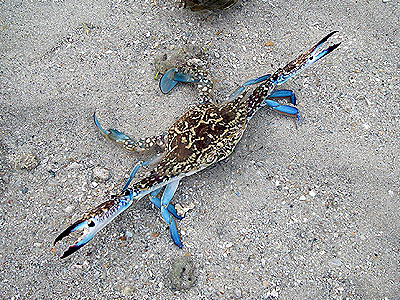
It was ultra aggressive, and raised its pincers the moment it saw me. In fact, it even ran towards me a few times, snapping at my foot with its pincers! Good thing that I was wearing booties :)
I also found lots and lots of sand dollars at the sandy area.
Sand dollars are actually related to sea urchins, sea stars, and even sea cucumbers! They belong to this group (aka phylum) called Echinodermata, which means 'spiny-skin' in Greek. If you look at a sand dollar carefully, you will find that it is covered with tiny little spines that make it feel velvety when you touch it.
I found a carpet anemone (Stichodactyla sp.) too!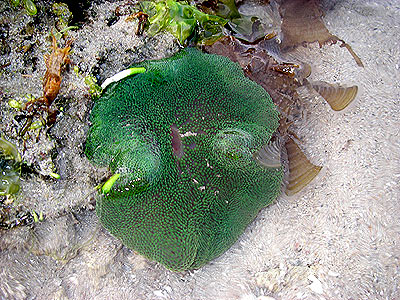
And a little synaptid sea cucumber (Family Synaptidae). But this one was only about 40cm long - much smaller than the one we found in Semakau Landfill.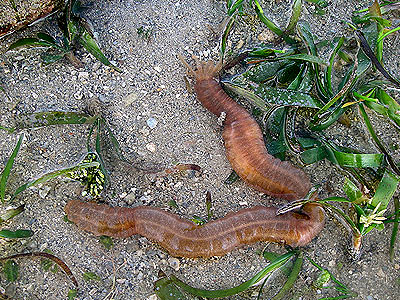
There were several peacock anemones (Family Cerianthidae) in the seagrass lagoon.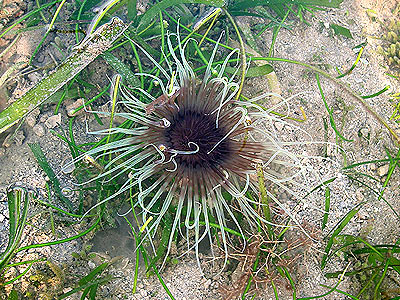
There were many corals as well, both hard (below top 2) and soft (below bottom 2).
And there were also beautiful carpets of zoanthids (Order Zoanthidea) here and there. Also known as colonial anemones, and a zoanthids colony comprises little polyps linked to each other.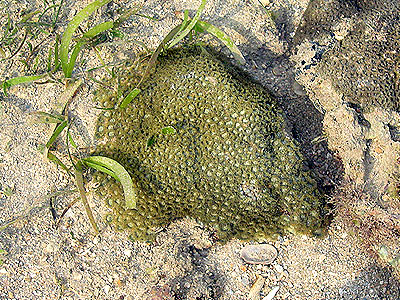
And here's a really pretty flatworm. Looks like a Pseudobiceros bedfordi to me.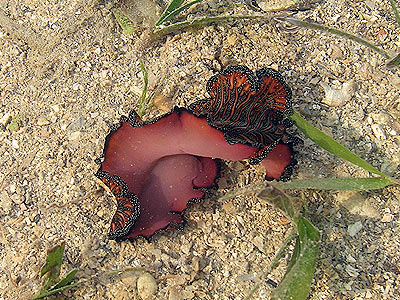
We also saw several pufferfish today!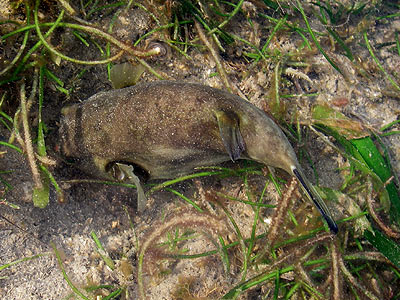
There was also a school of juvenile striped eel-tail catfish (Plotosus lineatus)! These young fish usually swim together in a "ball" for protection. Sometimes, there could be as many as hundreds of them together!
I have read some where that knobbly sea stars (Protoreaster nodosus) can be found at Cyrene Reef. After searching high and low for them, I finally found one!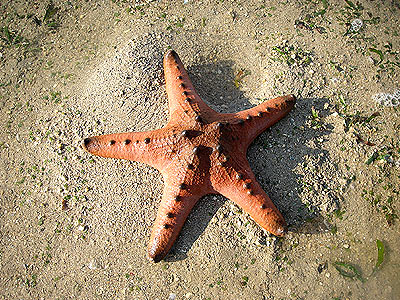
It's less than 20cm wide (compared with the 30cm ones we usually see) and has fewer knobs. Could it be a juvenile? Past studies had shown that the local knobbly sea star population comprises almost entirely of adults, which could suggest low or infrequently recruitment of young ones. So if this is a juvenile, then it is probaby a really good sign that they have started recruiting again! :)
I also found a little cushion star (Culcita novaeguineae), about 12-13cm wide! The ones I've seen else where were like at least 20cm wide! Do hope this is yet another good sign that our sea stars are reproducing!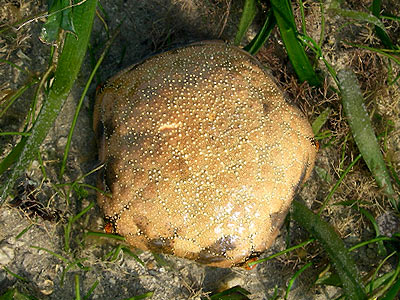
Indeed, Cyrene Reef harbours lots of little surprises.
Understand from Marcus that they found common sea stars and sea urchins at the other side of the reef, which I didn't have the time to explore! Check out his Annotated Budak blog for more details!
Really hope to go back there again some day :)
